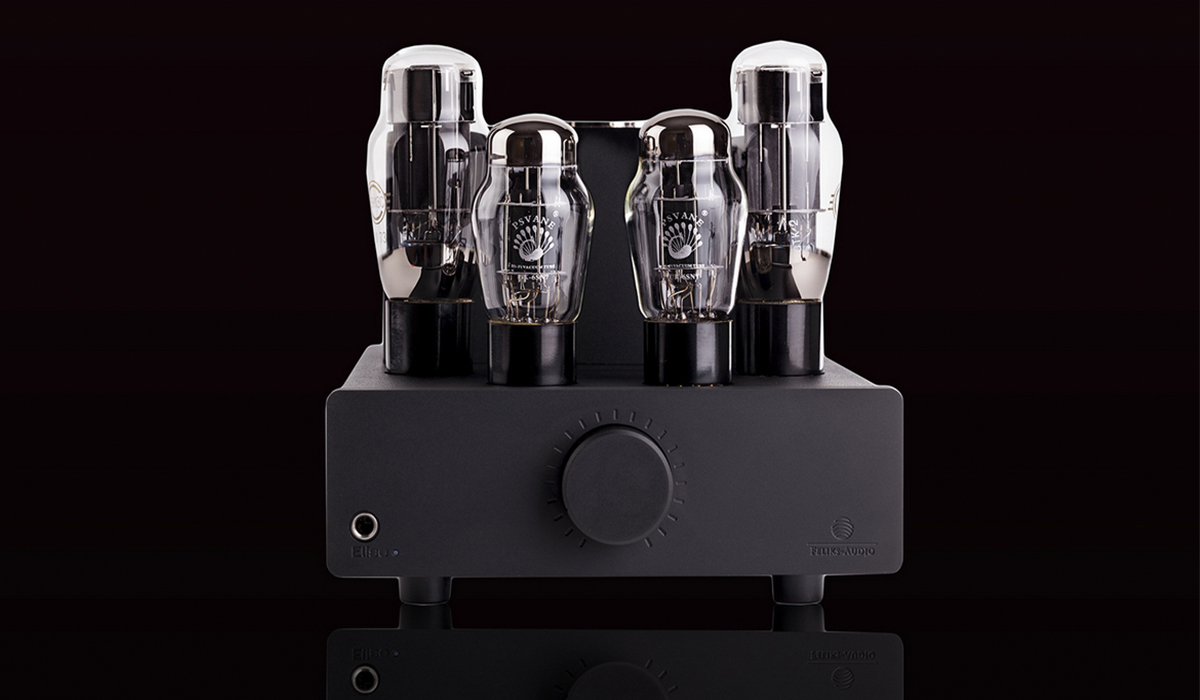
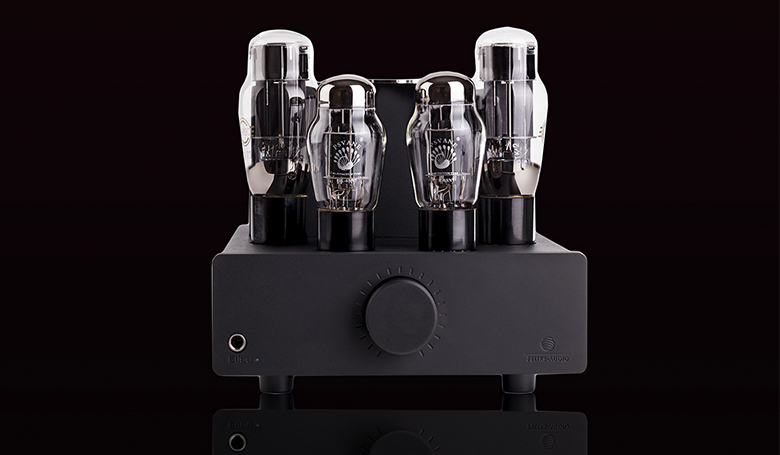
Feliks Audio


Feliks Audio
Feliks Audio is a Polish boutique headphone amplifier manufacturer that specializes in tube circuit designs. Their Elise MkII model has been making waves on tube amp forums and trade shows due to its attractive price point - even more so because of its ability to accept different tubes and re-bias itself (which we’ll get to in a bit). In this review, we break down the Elise MkII’s design, sound, packaging and accessories, specs and more, as well as how it compares to other models. If you’re interested in additional options, check out our best headphone amps roundup.
One of only three production models at the time of writing, the newly updated Elise MkII is virtually identical in looks to Felix Audio’s flagship model, the Euforia.
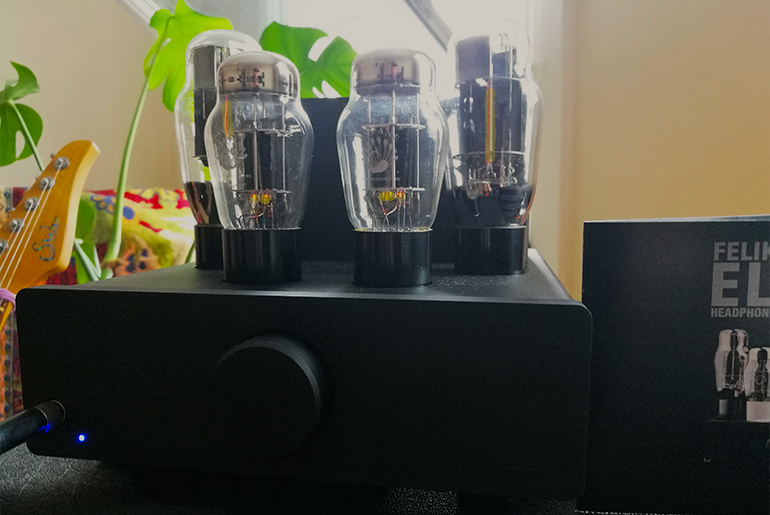
We’ll outline the differences between the two further down in this review, but let’s start with the first impression. The most captivating feature in the Elise’s design is the proud glass display, arranged in two pairs - two driver vacuum tubes at the front and two slightly larger output models nesting behind. The visual statement cannot be underestimated - the glowing tubes are as arresting as the horns of an angry bull staring at you from a close distance. Just behind the tubes sits the big black tower of a toroidal transformer. This is responsible for much of the unit’s weight, as well as the reproduction quality, of course.
The front control panel below is reassuringly simple - just a large volume knob, a blue LED light indicating the unit’s on/off state, and a quarter inch headphone jack socket. It’s more streamlined - one might even say spartan - as a design approach in comparison to something like the Linear Tube Audio MZ2-S (full review). Not much is happening at the back either. There you’ll find an AC power socket (you can specify voltage when ordering - 110V or 230V), an on/off switch, and two pairs of line-level unbalanced RCA connections - each handling input and output. The latter is quite an important and a very welcome feature, indicating that the Elise can also be used as a high-end tube preamplifier to drive your favorite power amp.
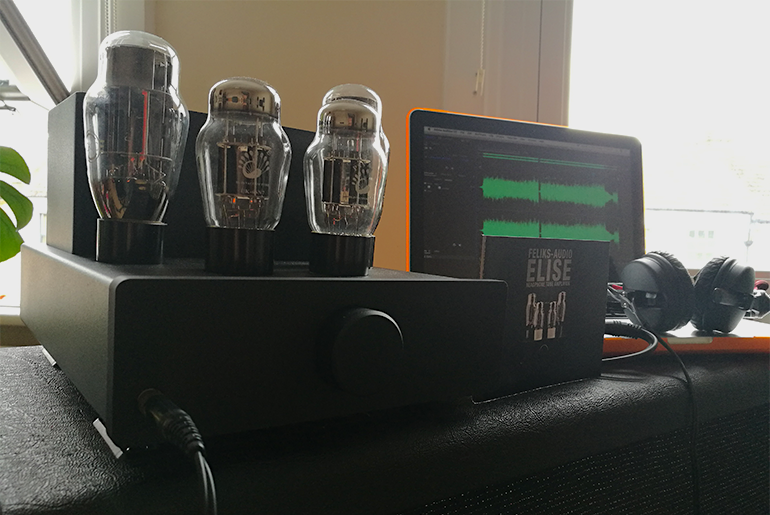
Let’s talk about the tubes a little - they are, after all, Elise’s strong selling point. That and its ability to re-bias itself, of course. For those unfamiliar with the slightly mysterious and voodoo-like effect of vacuum tubes on sonics, let’s clarify what re-biasing means. Most tube circuits are designed with a specific set of tube models in mind - meaning that their (current-drawing) tube readings are set in stone, so to speak. If that’s the case, changing tubes to a different model would simply produce a loud bang of shattered glass, followed by a stream of even louder cursing. Not the Elise though. Its aforementioned re-biasing feature - which applies to output tubes only, by the way - optimises the current-drawing figures of the newly substituted tubes so that they perfectly match its circuit. Still, Feliks Audio provide a list of ‘endorsed’ tube models that can replace the stock 6SN7 driver and 6N13S output specimens.
As always, it goes without saying that, when tube rolling, which is the process of swapping tubes in search of a different sound, it is recommended to purchase matched tube pairs. The Elise will happily accept a range of matched pairs, which can be found on Felik’s list. This explains why so many audiophiles have shown interest in Feliks Audio since the release of this amp - the tube swapping variations are nearly infinite, allowing you to change the sonic character.
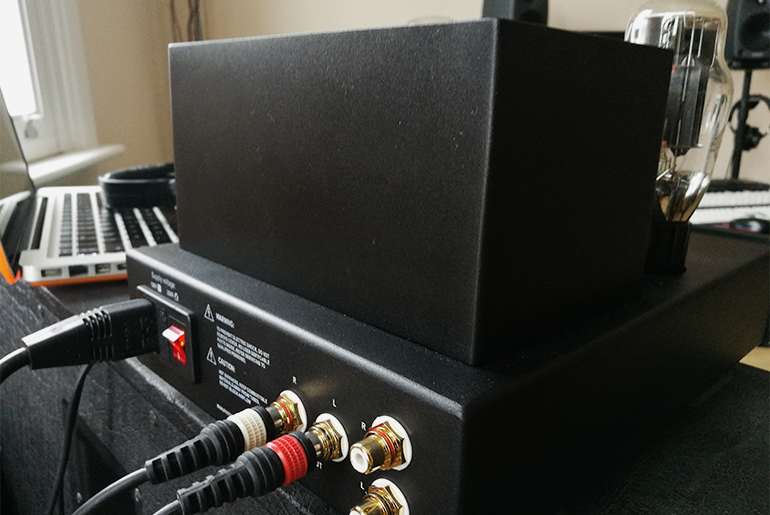
The Elise MkII features a new noise reduction circuit upgrade, awarded by the absolutely massive custom toroidal transformer sitting behind the tube cradles. Its electronic ripple suppression - ripples, in this case, means harmonics around the AC line frequencies of 50/60Hz - plays a big role for the near-zero background noise performance of this amp. We’re pretty sure the technology was ‘borrowed’ from Elise’s flagship sibling, the Euforia.
The unit as a whole is well made and very heavy. Like the old classic designs of yesteryear, this kind of heavy can only mean good things. This also might be a good time for a word of warning - the chassis, and specifically the tubes, reach extremely high temperatures - in excess of 300°F. The device should only be positioned on solid surfaces, in well ventilated areas, and away from children.
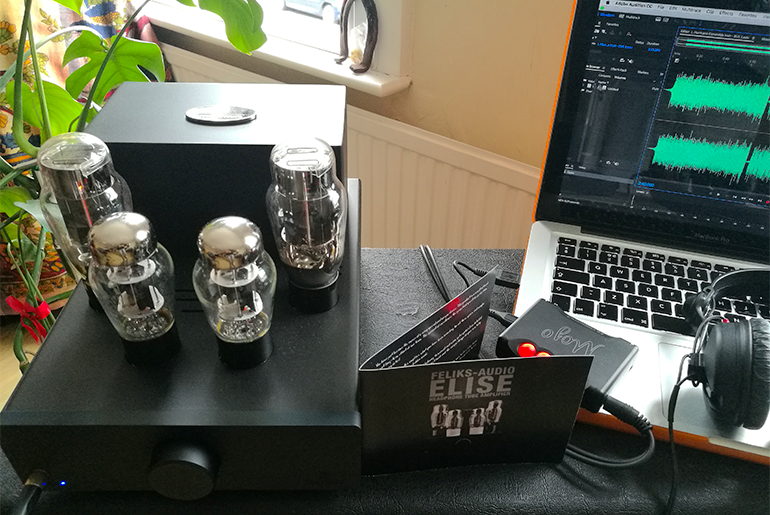
Before we got to the fun bit, we did give the Elise a chance to warm up a little. Feliks Audio recommend between twenty and fifty hours of burn-in time. While this term can be a bit of a tribal myth for other gear, it’s actually very relevant for tube-driven equipment. The Elise was given a few days to ‘ripen’ its signal flow, and we lined up some familiar testing material of various genres. The music was in a variety of digital formats: from 192 kbps MP3s all the way up to super-crisp DSD128. The DAC used for the tests was the glorious Chord Mojo - working with its preamp bypassed, pushing straight line level signal into the Elise. We did our listening tests with several pairs of headphones - Sennheiser HD25s, HD660s, Audio-Technica ATH-M50, and a pair of Ultimate Ears IEMs.
Our first impressions were great. The Elise was accurate in terms of frequency representation, with perhaps just a minimal coloration around the mids. It’s a rather pleasant sort of sonic ‘glue,’ which is so familiar and even sought after if you’re into tubes. Vacuum tube headphone amps and preamplifiers have a somewhat gooey sound, which some solid-state devices - such as the iFi micro iCAN SE (full review) - try to mimic with their ‘TubeState’ emulation tech.
Though this ‘sonic glue’ is pleasing to the ear, it’s also often the reason some people choose solid state amps. By large, they deliver a faster and more precise attack. Since different tubes can have drastically different transient speeds, it seems that Feliks Audio have done well to allow its customers the ability to upgrade and fine tune further to suit personal taste. Lucky for tinkerers, quite a few high-end companies are starting to offer such hot-rodding - you’ll even find it in solid-state devices such as the Burson Audio Play (full review) for instance, which accepts different op-amp. Customization isn’t about a total change in character, just a twist on the flavour and feel, if you like.
When listening to the Elise loaded with its supplied stock tubes, there was a sense that the amp character was indeed on the ‘warm and gooey’ side - which is the classic tube sound as we know it. In no way did this cost the amp detail though - instrument separation remained impressive throughout all tests. It’s a slightly forward sounding amplifier - listening perspective was a lot like front seats at a show - with quite a ‘contemporary’ vibe, not unlike how you rediscover a newly re-mastered old record. Although this meant that mid register instruments, such as vocals and guitars, stood out really well, the overall soundstage was somewhat narrower than expected. This was only a slight issue, but worth mentioning.
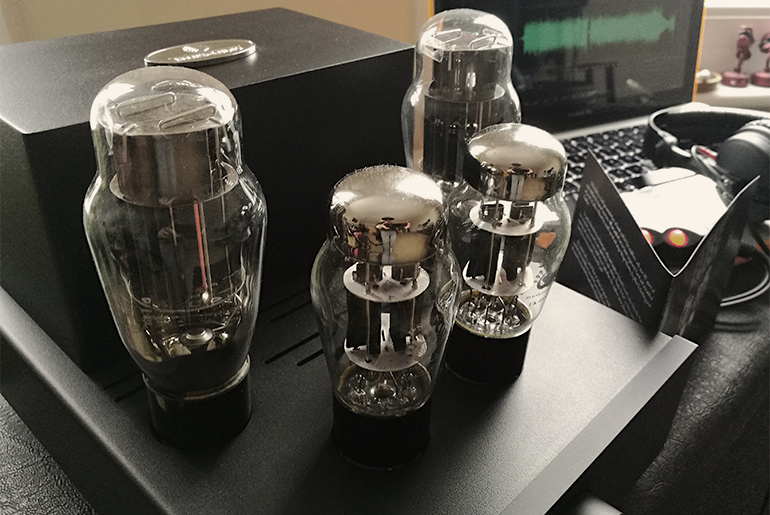
Soundstage in tube gear tends to grow wider after prolonged listening time, as the circuitry reaches optimal performance figures. So, the limited time we had with the Elise needs to be taken into consideration. Substituting tubes also brings about differences in width and frequency response. If you’re interested, check out the online forums for impressions in regards to tube rolling. We found bass extension and definition to be superb, and the high registers really smooth. No doubt the big transformer plays a role here too. As a whole, this is one seriously well tuned amplifier.
Finally, on the subject of headphone impedance, the Elise isn’t necessarily the most powerful amp out there. It supports headphone impedances between 32 - 600 ohms, which places it well within the range for most dynamic headphone sets. We found that we had to ride the volume knob up to three quarters to satisfy a hungry, higher-impedance pair of cans. If you want really loud, the Elise might actually struggle - its power rating is around 200mW. Regardless of which cans we tried it with, the amp remained full-bodied. Most of all, despite its lack of clinical detail, it really managed to emphasize the qualities of the music we tested it with.
The Elise is shipped with its tubes removed from the chassis - standard for tube products. Packaging is first class, with the tubes carefully nesting in a foam holder and numbered from one to four. The supplied manual has a neat tube installation guide - the tubes just need to be inserted in their corresponding slot number until they sit flush to the chassis.
As for accessories, there’s not much. The supplied AC power cable is the only extra piece. As mentioned before, the company’s website store allows for specifying the desired voltage (110V/230V) and, for the real tube rollers out there, there’s an option to order just the chassis.
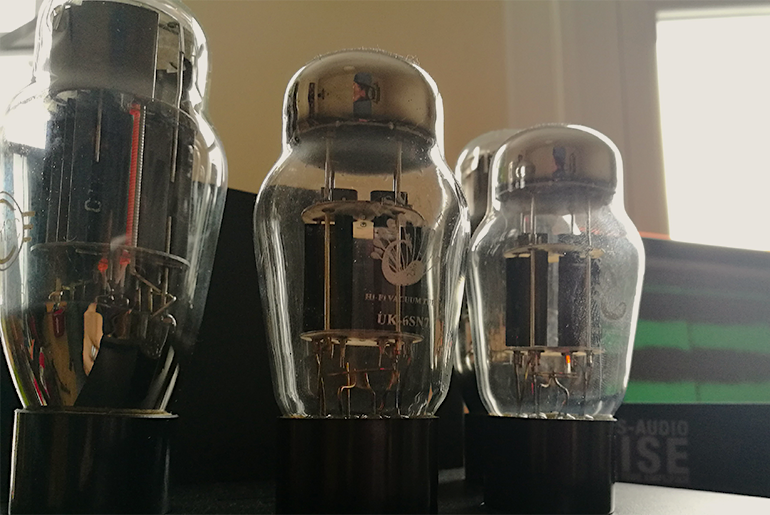
With looks that grace any hi-fi setup, it’s still the Elise’s sound that impressed us most.
The Elise MkII is perfect for anyone looking for a serious high-end headphone amp - its price point makes it into an incredibly attractive contender. Feliks Audio even offer a handsome 23% Tax refund for non-EU customers. The option of upgrading its tonal qualities further gives this amp a unique advantage over the majority of its competition. You can read more about those in our best headphone amps roundup.
Feliks Audio’s auto-bias circuit might convince you to spend a lot more money on high-end vacuum tubes. But, if the somewhat cathartic experience of tube rolling is your thing, then this amplifier is definitely for you. The Elise can act as a high quality preamp too, and as the demand grows, we’ve heard that the company will be offering a balanced option as an upgrade.
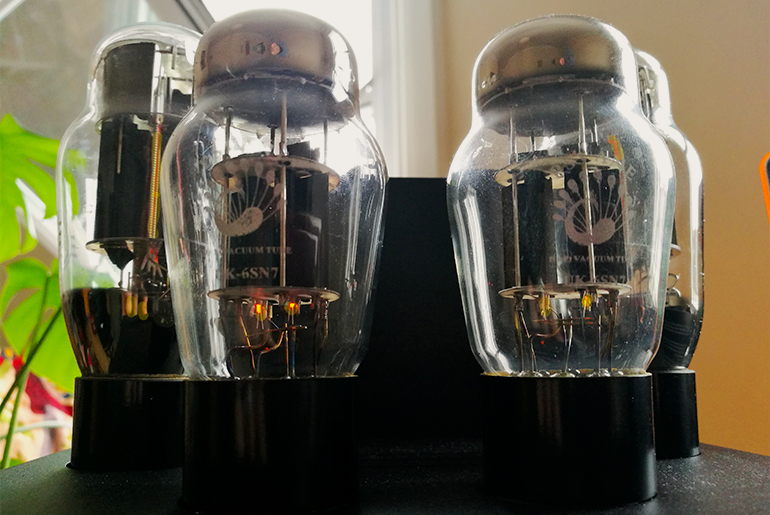
| Amps | Price | DAC* | RHI** | WPC*** | Dimensions | Weight |
|---|---|---|---|---|---|---|
| Feliks Elise | $1,609**** | No | 32-600Ω | 0.2 / 32Ω | 12” x 8” x 6.7” | 10.14lbs |
| Feliks Euforia | $2,475**** | No | 32-600Ω | Unknown | 12.2" x 8.1" x 6.9" | 13.2lbs |
| Hafler HA75 | $1,000 | No | 8-400Ω | Unknown | 8" x 6.5" x 2" | 4lbs |
| Woo Audio WA7 | $999 | Yes | 8-600Ω | 1 / 32Ω | 5.1” x 4.8” x 4.8” | 8.1lbs |
*DAC = Digital-to-Analogue Converter
**RHI = Recommended Headphone Impedance
***WPC = Watts Per Channel
****Subject to Location
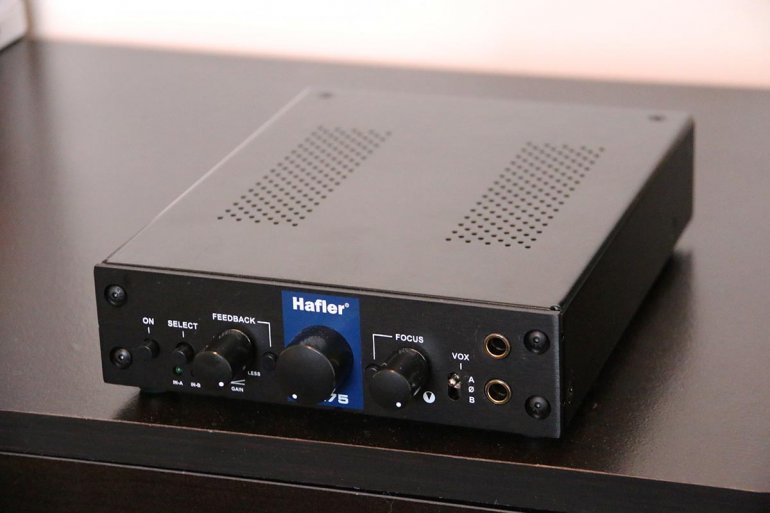
If you have been intrigued by the Elise MkII, it makes total sense to check out its more expensive sibling, the Euforia. Costing nearly a third more than the Elise, the Euforia is virtually identical in looks. The difference between the two is in the Euforia’s superior circuit components - Mundorf and Nichicon capacitors and Dale and Caddock resistors, 100% pure silver signal wiring sealed in teflon, gold-plated tube sockets… The Euforia does have a slightly different tonal character too. In a sense, it ticks off all of our minor critique points outlined in the above Elise review - it’s less veiled, with more of an open, revealing, and transparent character than the Elise. Some people might still prefer the sonic glue of the Elise, but in our opinion, the Euforia is just another step up. It does that auto-biasing thing too.
Another viable option is the Hafler HA75 headphone amplifier. It may seem a little crude at first glance, but it comes with more than one trick hidden up its sleeve. Namely, the parallel tube blend knob, called Feedback, allows for its tube circuitry to be blended in - as much or as little as you like. This may not be as pure or elegant a solution as actual tube rolling, but the result may not be that far off. It may be a bit more affordable too. That thing we said about soundstage and stereo width? The Haffler has a special control circuit for this too - open wide, please! Read our in-depth review of the Hafler HA75.
If you're looking for something a little more unique, the Woo Audio WA7 is an entirely separate beast from the Elise - slightly funkier, a lot more modern in looks, and has a built-in DAC. It’ll struggle to keep up with the Elise in the sonic department, unless you start tube rolling - yes, it can do that too. Lacking the huge transformer (it has an external PSU) makes its high-end frequency handling slightly less posh-sounding than the Elise. Still, the WA7 represents a tremendous value for money, characterised by a gloriously ballsy tube sound.
See the Feliks Audio Elise MkII See Our Best Headphone Amps Roundup